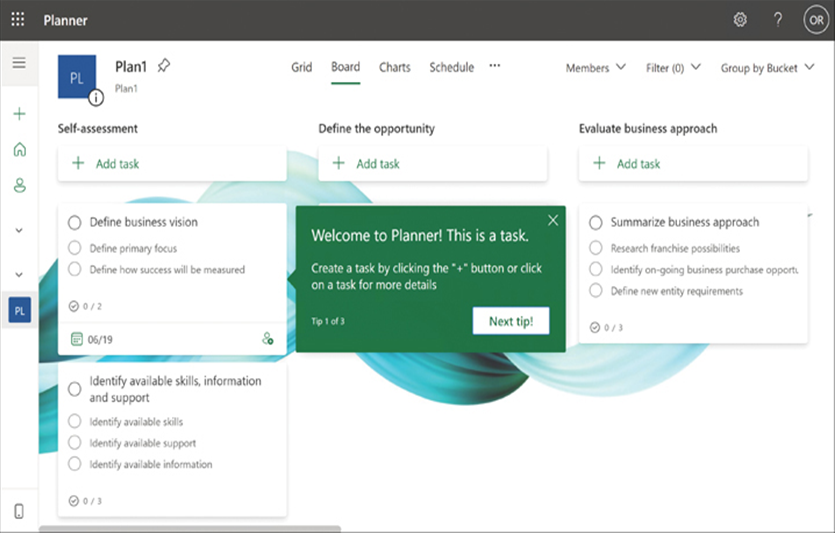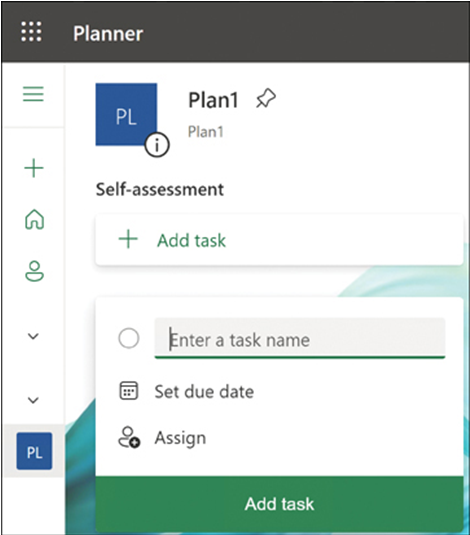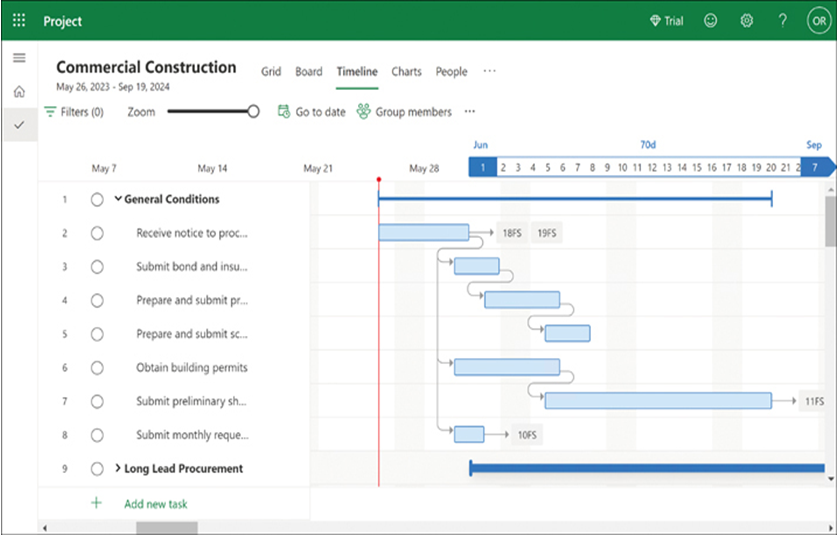Microsoft Planner is a simple project management tool that enables users to create plans and populate them with tasks, events, and other elements from various Microsoft 365 services. The default view of a plan consists of vertical columns called buckets, each of which consists of tasks, as shown in Figure 2-13. Tasks can contain graphics, links, and files hosted by SharePoint.

FIGURE 2-13 A plan created in Microsoft Planner
Clicking the +Add Task button opens a dialog like that shown in Figure 2-14, in which the user specifies a task name and a due date and assigns it to specific users.

FIGURE 2-14 Creating a task in Microsoft Planner
When a user creates a plan, the tool automatically creates a Microsoft 365 group, the members of which are those to whom the plan applies. The opposite is also true; when a user or administrator creates a Microsoft 365 group, the tool creates a plan for it. As with all Microsoft 365 groups, a group mailbox and calendar are also associated with it; plan users can use them to schedule appointments and events and receive email notifications.
A Planner plan can also be integrated into Microsoft Teams by adding a new tab to a team’s General page. Therefore, users can work with planned tasks while contacting other team members via chat or call.
Microsoft Project
While Planner provides basic task management capabilities, administrators requiring more extensive features can run Microsoft Project. Project has existed in various forms (even a DOS version) since 1984, making it one of the oldest Microsoft software products. Today, a desktop version, Microsoft Project 2019, is still available in Standard and Professional versions, and a Microsoft Project Server version is based on SharePoint. However, the primary product is Project for the Web, a cloud-based product available for an additional subscription fee.
While Microsoft Project is considered part of the Office environment, it is not included in any Microsoft 365 subscription products. The cloud-based Project for Web product is available in three subscription plans: Project Plan 1, Project Plan 2, and Project Plan 3. Plan 1 is web-only, whereas Plan 2 and Plan 3 include the desktop version of the application for up to five users.
Project includes a grid view similar to Planner΄s, in which vertical buckets contain rows of tasks. However, Project also includes a timeline view with an interactive Gantt chart display, as shown in Figure 2-15.

FIGURE 2-15 A sample timeline in Microsoft Project for the web
Project also manages scheduling and budgeting for large-scale projects. Users can establish dependencies between tasks so a scheduling delay added to one task pushes its dependent tasks forward in the schedule by the same amount of time. In the same way, changes in costs for particular tasks are updated in the project’s overall budget.
Project allows administrators to assign tasks to specific users or groups and integrates with Microsoft Teams so all involved users can receive updated information about the project. Project is also built on Microsoft Power Platform, enabling users to integrate it with their own Power Apps apps and create Power BI dashboards containing real-time project information.
